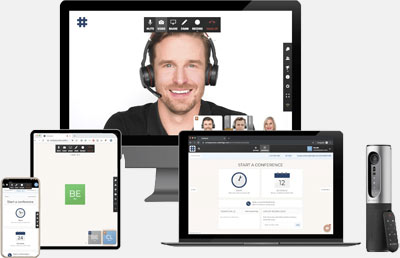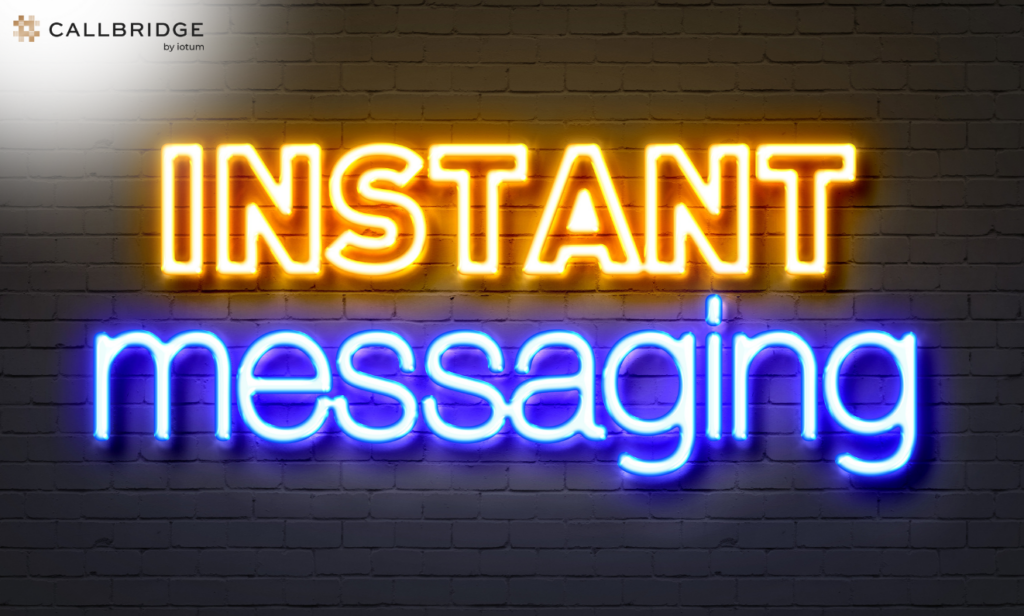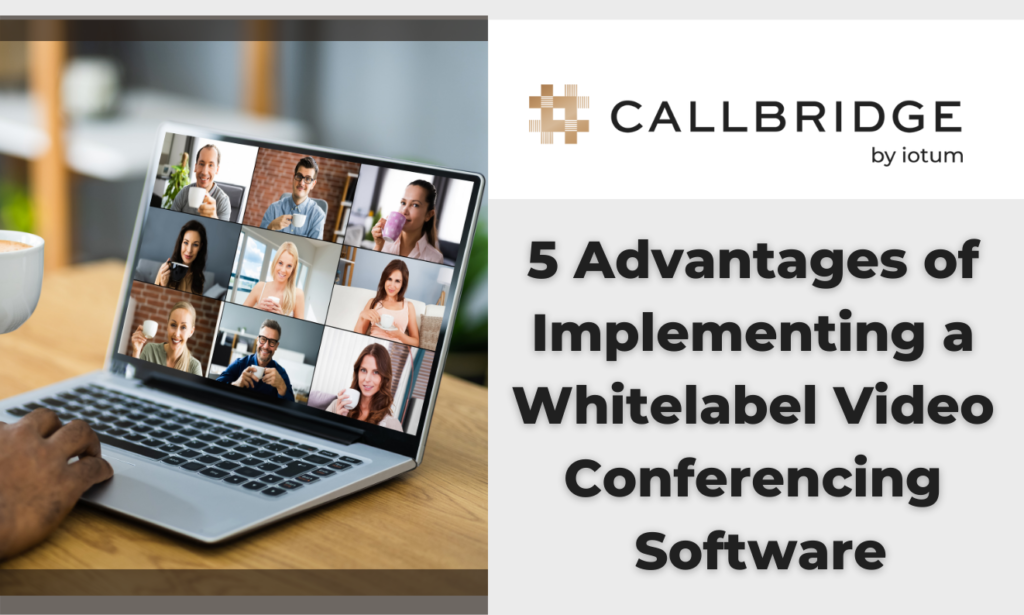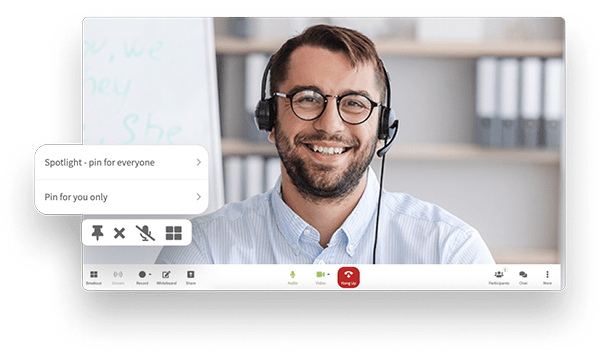 Looking for the best video platform for education that fits into your already existing course layout to enhance and breathe life in your content? The options are aplenty. But, above anything else, especially when it comes to the quality of your student’s education, you want to do a little research to make sure you’ve chosen the best technology for your online course.
Looking for the best video platform for education that fits into your already existing course layout to enhance and breathe life in your content? The options are aplenty. But, above anything else, especially when it comes to the quality of your student’s education, you want to do a little research to make sure you’ve chosen the best technology for your online course.
In this blog post, we’ll discuss:
- 3 Key Video Platform Educational Features
- Must-Have Optimizations
- The Top Qualities Every Online Course Should Have
- The 3 Teaching Modes You Can Use Right Now
- And more!
Who’s It For?
Video conferencing in schools is a smart move for colleges and universities to further their reach to attract more students and add better interactivity across online touchpoints. It’s also the perfect solution to enhance your own offering as a teacher, entrepreneur, solopreneur or if you’re starting an online business.
Consider coaches looking to broaden their services by providing educational programs online that can be a combination of pre-recorded lectures with the addition of voice and video conferencing for real-time teaching. Even Human Resources departments in small businesses or large enterprises wanting to provide better skillset training online to employees can benefit from implementing a video platform for continuing education.
Whether an established institution or burgeoning online learning platform, the opportunity to improve one’s skill set is ever-present with the addition of a video platform to any course content or as a stand-alone feature.
A Few Questions
 So what video platform for education will best support your educational endeavor? What exactly are your needs and what makes one stand out from the others? Is the platform only for you to communicate or will you be looking to include content from others too? How far is your reach and how many learners are you expecting to onboard?
So what video platform for education will best support your educational endeavor? What exactly are your needs and what makes one stand out from the others? Is the platform only for you to communicate or will you be looking to include content from others too? How far is your reach and how many learners are you expecting to onboard?
Here are 5 must-have optimizations that make a video platform’s performance, compatibility and integration complement your online course:
- Approachable, Easy To Navigate User Experience
Learners will appreciate an interface that is designed precisely for their learning experience, but they will really appreciate it even more with video. Make learning online more fun and dynamic with video touchpoints that drive home the course material. By using a video platform that can easily integrate into what you already have online, you’re making your content more approachable and remarkable. Consider the different processes required to access the course. Learners shouldn’t spend too much time logging on and logging off. Include clearly marked navigation throughout your site and app, and depending on the size of the course, it’s wise to go the “mobile friendly” route. When learning resources are just a few clicks away, and video-enabled pieces are quick to locate and they play immediately, the learner will feel more engaged throughout the process. An easy way to determine which video platform is a right fit for you is to sign up for a free trial. Look through examples and previous work to see if you and your team can get through it without set-by-step instructions. Bonus points for a video platform that comes with a How-To section full of tutorials, support, and other set-up tools to get you started. - Integrated and Responsive Design
For a video platform to seamlessly fit into your existing app or to start from scratch and build your online course around it, don’t underestimate the power of integrated and responsive design.- Integration:
Learners will appreciate online learning that is enhanced with visually appealing video. Look for a video platform that can dovetail into your already established online course using patented API integration – a video platform that can “talk to” your existing system saves time transferring and resourcing data. - Responsiveness:
Learners don’t always have a set time and location to sit down and study. The bulk of their learning could be on a desktop but it could also be on a tablet or device. Ensure your course content is optimized to be responsive – the same content available across multiple devices in a re-sized format – so learners can log on at any time from any device and still have an optimal viewing and hearing experience.
- Integration:
- Open Access To Other Learning Sources
Imagine how you want your course content to be digested. Having a limited number of types of learning resources might only dampen users’ engagement and not be the best way to leave a lasting impact. Instead, ensure your video platform opens the floodgates to education with easy and direct access to word documents, videos, images, audio, PDFs, JPEGs, screenshots – anything that can better shape an idea or give life to a concept or work alongside reading material. Think enhanced presentations that are less traditional and more dimensional. - Variety Of Digital Features
Video conferencing in education thrives when the features it comes with are utilized to their maximum potential. A video platform that embeds into your current app works to provide a multidimensional touchpoint to bring learners closer to their educators. With the voice and video integration, experience what it’s like to use:- Screen Sharing
The ultimate feature for any educational purpose, screen sharing provides users with the real-time experience of being able to see exactly what’s happening on someone else’s screen. Much like show and tell but with more “show” and less “tell,” a computer engineering student can share their screen to lead the class through how they coded a program. In a presentation, multiple graphic design students can share their screen to show their work online for critiquing. - Online Whiteboard
This digital space allows for students and teachers to communicate not only with words, but with images, shapes, designs and drawings. The online whiteboard is just like its “in-person” counterpart and does the same thing except better. It becomes easier to communicate higher quality ideas when educators can use this feature to break down challenging formulas, illustrate mindmaps, flowcharts, online meeting icebreakers and so much more. Plus, it’s hyper collaborative. Learners can add to the board with comments, by drawing and or sharing files too. Boards can be screen-grabbed, wiped clean or saved, and shared later. - AI-Transcribing
As technology grows and continues to support the way we learn, it’s no surprise that artificial intelligence is positively affecting education. Intelligent systems like an AI-personal assistant work in the background while learners absorb and pay attention in the front row of their education. AI-transcriptions during a video call gives students another way to “take notes.” Especially during online lectures, seminars, and workshops, students may want to write their own notes but transcriptions that come with speaker tags, and time and date stamps are extremely beneficial. Furthermore, with auto tag features, common words, topics and trends are pulled out for easy recall and more information post lecture. Students are given the opportunity to compare notes and worry less about missing information. And with smart search capabilities, it’s pain free to search through transcriptions and save to the cloud for another time.
- Screen Sharing
- Ability To Scale
An online course comes with the opportunity to continually grow in content, size and reach. A successful virtual education is inclusive and will eventually need to scale up to match the demand of students and functionality. This doesn’t happen overnight, and instead of worrying about how it will look, it’s more important to know that the option is there. Select a robust video platform that can grow alongside your school or course. Ask your provider how that could look: A higher participant capacity, multiple hosts, enhanced security options, customized branding, etc. As you expand your reach, your learners continue to develop and need to feel supported in their studies. By providing a reliable infrastructure, you can keep up with their current and future needs using a video platform that promotes collaboration, better learning and dynamic interaction.
What Are Some Qualities Of A Good Online Course?
 It’s so much easier for students to learn when they feel engaged. Video adds depth to learning and is the second best thing to being in person. Plus, it ignites collaboration and interaction through body language and nuance; Serious topic matters can be approached with direct eye contact.
It’s so much easier for students to learn when they feel engaged. Video adds depth to learning and is the second best thing to being in person. Plus, it ignites collaboration and interaction through body language and nuance; Serious topic matters can be approached with direct eye contact.
Connecting to teachers and other learners becomes second nature when a video platform is utilized. Here’s how a video platform in education can lead to more effective learning and enriched course content:
- It Promotes Equity And Accessibility
Learners come from all socioeconomic backgrounds from all over the world, some of whom may not be able to afford a brick and mortar education. Learning online provides them with the opportunity to gain knowledge in a way they otherwise couldn’t. This opens access to accelerated learning for everyone including marginalized individuals. Video can bring together smaller communities to create global ones. Include readings and audiovisual materials that are inclusive and diverse. - It Encourages Interaction
Online learning has become multi-faceted in that it doesn’t have to be only reading material on screen. A solid course loaded with video integration provides real-time lectures that are recorded, and provides interaction opportunities between the teacher and learners, as well as groups of learners. It’s easy to set up smaller group chats for more intimate settings to solve a problem, coach each other, or provide personalized feedback. - It Grabs Attention
A video platform for education naturally sparks engagement. Participants have to log on and be present! But when a course can invite students to participate by sharing, and capturing their interest with video that allows for connection and a way to be seen and heard, it’s hard not to pay attention to that! - It Encourages Challenges
A good online course is cognitively challenging. If it wasn’t, then students wouldn’t be learning! With a strong video-centric course, learners can ask for help and attend virtual office hours. Online tutoring, group studies and mentoring are options too. - It Promotes Self-Awareness And Agency
Learners are given flexibility and autonomy in the classroom. By providing the space for students to apply lessons to their everyday experience, learning becomes meaningful. If you’re running a coaching workshop, you can teach universal coaching methodologies that each student can apply to their niche as a finance coach or life coach. In a journalism course, you can teach students how to conduct professional interviews and then invite students to apply that lesson during a live interactive class with other students. - It Teaches Through Transmission, Transaction And Transformation
A video platform supports an instructor’s teachings in real time through these 3 modes:- Transmission: When a teacher has created the curriculum and delivers the information to the students who are there to receive it.
Transaction: When learners are presented with material but engage in the understanding of the content through activities and through “social meaning-making processes with other learners and their instructor.”
Transformation: When learners are encouraged to adopt a growth mindset and absorb information through experiential learning and embodiment, like yoga or spiritual practices.
All three modes can be combined through video to create an enriched learning experience in an online setting. Transmission through live and recorded lectures; Transaction through group activities and collaborative learning techniques like round robin, buzzing and clusters; and transformation through applying the information then talking about it in a discussion group and reevaluating their own working processes.
The best video platform for education helps to broaden and scale the learning experience by applying flexibility to education, making course matter stimulating, granting easy and centralized access to files and so much more.
That’s why with Callbridge, the Zoom alternative to video conferencing, you can expect to reach learners anywhere on the planet your course material desires to be learned. There are no limits as to how much you can scale and how limitless learning online can actually be.
Make use of sophisticated features like Screen Sharing, Gallery and Speaker Views, Live Streaming to YouTube, and more for a fully enriched, high definition experience that excites learners. Across college and universities, or as an add on to a professional skill set training, and more, use Callbridge’s video platform to shape effective online learning.








